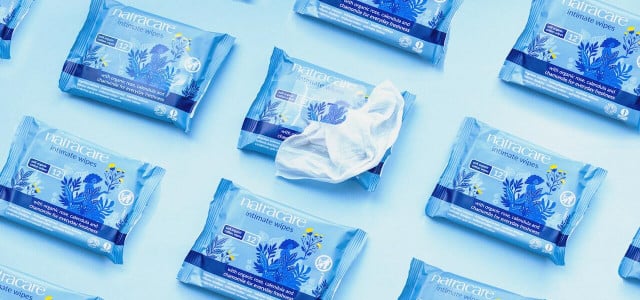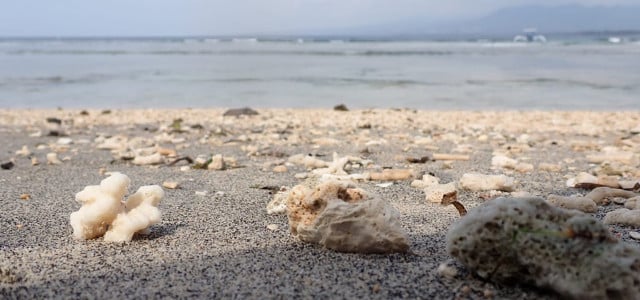Some wet wipes now claim to be safe to be flushed….but are flushable wipes really flushable? We look at some key factors, including their impact on the environment.
Wet wipes come in many varieties, from baby wipes to make-up remover wipes, to household cleaning wipes. You may also have noticed products marketed as ‘flushable wipes’, but are flushable wipes really flushable? The answer isn’t clear, so we’ll delve a little deeper into the debate, and look at the environmental impact of wet wipes in general.
Wet wipes can be extremely convenient, and are easy to use, and thinking we can flush wet wipes also seems to save us the mess. However, we have to be careful that messages such as, ‘flushable wet wipes’, don’t make us use more of these products than we normally would. We still recommend that you avoid using wet wipes whenever possible in order to minimize environmental damage.
We’ll explore the difference between ‘flushable’ and ‘non-flushable’ wipes, illustrating any differences between the types of wipes (cosmetic, household, etc). We also look at the claims surrounding ‘flushable’ wipes, and the impact such wipes can have on the environment, in terms of where they may end up, how long they take to biodegrade, and other concerns.
Are Flushable Wipes Really Flushable: Whats the Difference?
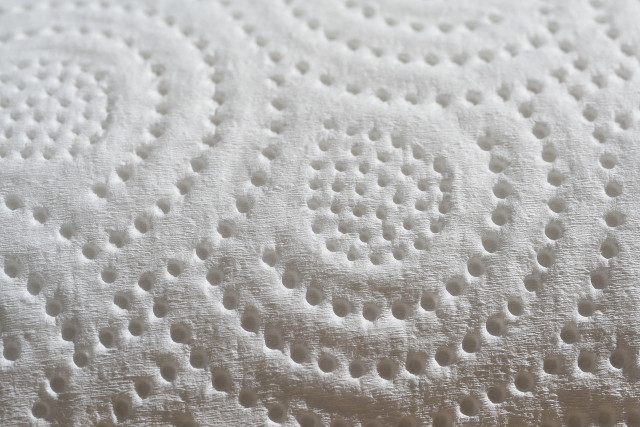


(Foto: CC0 / Pixabay / Engin_Akyurt)
Wet wipes are disposable sheets, which are stronger than regular toilet paper. Standard wet wipes are often made from fibrous materials such as cellulose from wood pulp, sometimes mixed with polymers such as viscose. Non-flushable wipes may be made from man-made fibers such as polyethylene or polypropylene. Both are spun into a tangled mat and then compressed. Often following this process, they are imbued with chemical products, depending on the intended use. They are designed and used for household, personal, and sanitary cleaning purposes. You will find a range of products available, including baby wipes, make-up removal wipes, toilet-tissue wipes, and multi-purpose cleaning wipes.
Wipes were not originally meant to be flushed down toilets, but now some wipes claim to be flushable. These are usually wipes that have shorter fibers and may include treatments that help them disintegrate more quickly than standard wipes. In the past, there was no international standard for these claims to adhere to, but in 2018 international flushability standards were introduced.
Just because some wipes may be marketed as flushable, doesn’t mean they don’t still cause problems. Even plumbers will tell you that even wipes branded as flushable can contribute to, or clog an entire system. Wipes don’t break down as quickly as regular toilet paper, and can also get mixed in with other materials which block up pipes. But there also is more to the matter, as we suggest that underneath the flushability claim, these wipes are not eco-friendly, as they continue to harm the environment just like their non-flushable counterparts.
Flushability Testing
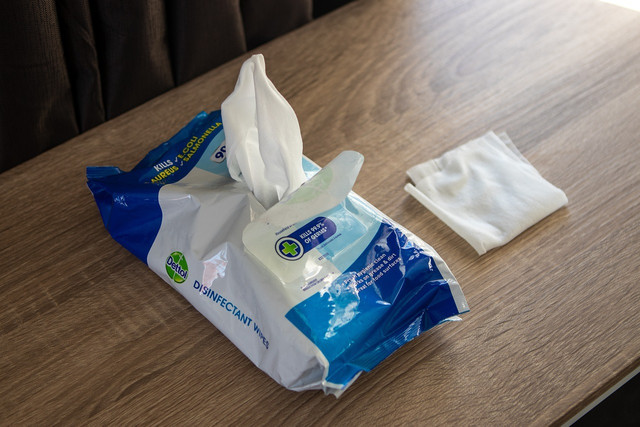


(Foto: CC0 / Pixabay / Squirrel_photos)
Testing standards and flushability specifications were updated in 2020. These tests are meant to determine if products, such as wet wipes, will:
- pass through pipework
- clog household or municipal sewage pumps
- disintegrate in a timely manner using various water treatment conditions
If they pass the tests, are flushable wipes really flushable?
This is still a question under debate. The tests are quite rigorous and have been designed in communication with the water treatment industry, but such tests cannot be perfect and are not tested on every single person’s home or pattern of usage. If people flush a number of wipes at the same time, for instance, they may not be flushable at all or may cause a blockage.
Add to this that the guidelines are still voluntary and self-regulated. There are organizations that many wet wipe companies can join, such as the Association of Woven Fabrics Industry (INDA), to try and gain safe standards across the board, but there is little to stop companies marketing non-flushable wipes from marketing products that do not pass these tests as flushable. There is also the argument that marking all wipes as potentially un-flushable would simplify a message that wet wipes in general, can not damage water systems, but the planet as well.
The best option is not to use wet wipes at all, choosing to use other reusable products instead. Baby wipes are especially convenient and most parents don’t want to go without them. In this case, the better option is to bag up used wet wipes and dispose of them that way or create your own.
If you do want to purchase wet wipes, make sure you buy those marked as flushable, with the company being a member of INDA or EDANA, and use these products sparingly.
Environmental Impacts of Flushable Wipes
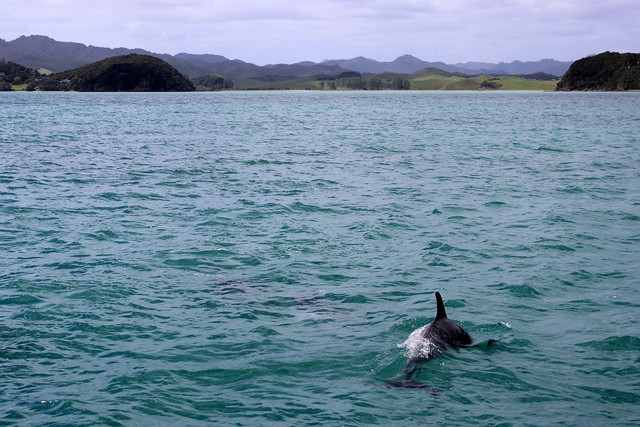


(Foto: CC0 / Pixabay / Ildigo)
Many wet wipes, flushable or not, contain microplastic fibers which do not biodegrade. It is believed there are approximately 5.25 trillion macro and micro pieces of plastic in our ocean & 46,000 pieces in every square mile of ocean. This plastic mass weighs up to 269,000 tonnes.
Many microplastics can be ingested by marine animals and other organisms, and they can be extremely detrimental to their health in terms of toxic contamination being fatal in many cases. It is estimated that plastic in our seas is contributing to the death of more than 100,000 marine mammals each year.
The use of microplastics and other components in wet wipes means that they are unlikely to biodegrade in anything less than 100 years. It would also seem that so-called flushable wipes also don’t degrade for a long long time, with studies currently studying if there is any actual difference between the two in terms of marine damage. Current data is showing that even flushable wipes won’t reduce degradability by more than 50%, compared to non-flushable wipes.
Other Sustainable Choices
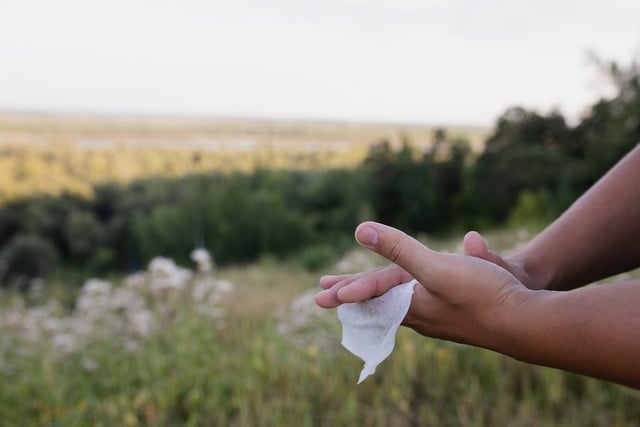


(Foto: CC0 / Pixabay / Katya_Ershova)
As suggested, maybe it’s time we ditched using wet wipes altogether. If we want a similar product, for ease of use, then we can also look elsewhere, to some alternatives. Reusable, organic, and biodegradable options are available to help you create a zero-waste bathroom. For makeup removal, you can use reusable organic cotton pads. For other cleaning needs, you could try using sustainable paper towel alternatives.
The environment must start to come first if we are to repair the damage we have done by microplastic pollution in the ocean, and as a bonus, you likely won’t get clogged pipes and drains in the process. A little thought and care go a long way.
Read more:
- Is Paper Biodegradable? It Depends
- What Does Biodegradable Really Mean?
- Bioplastics: How Green and Sustainable Are They?
Do you like this post?






